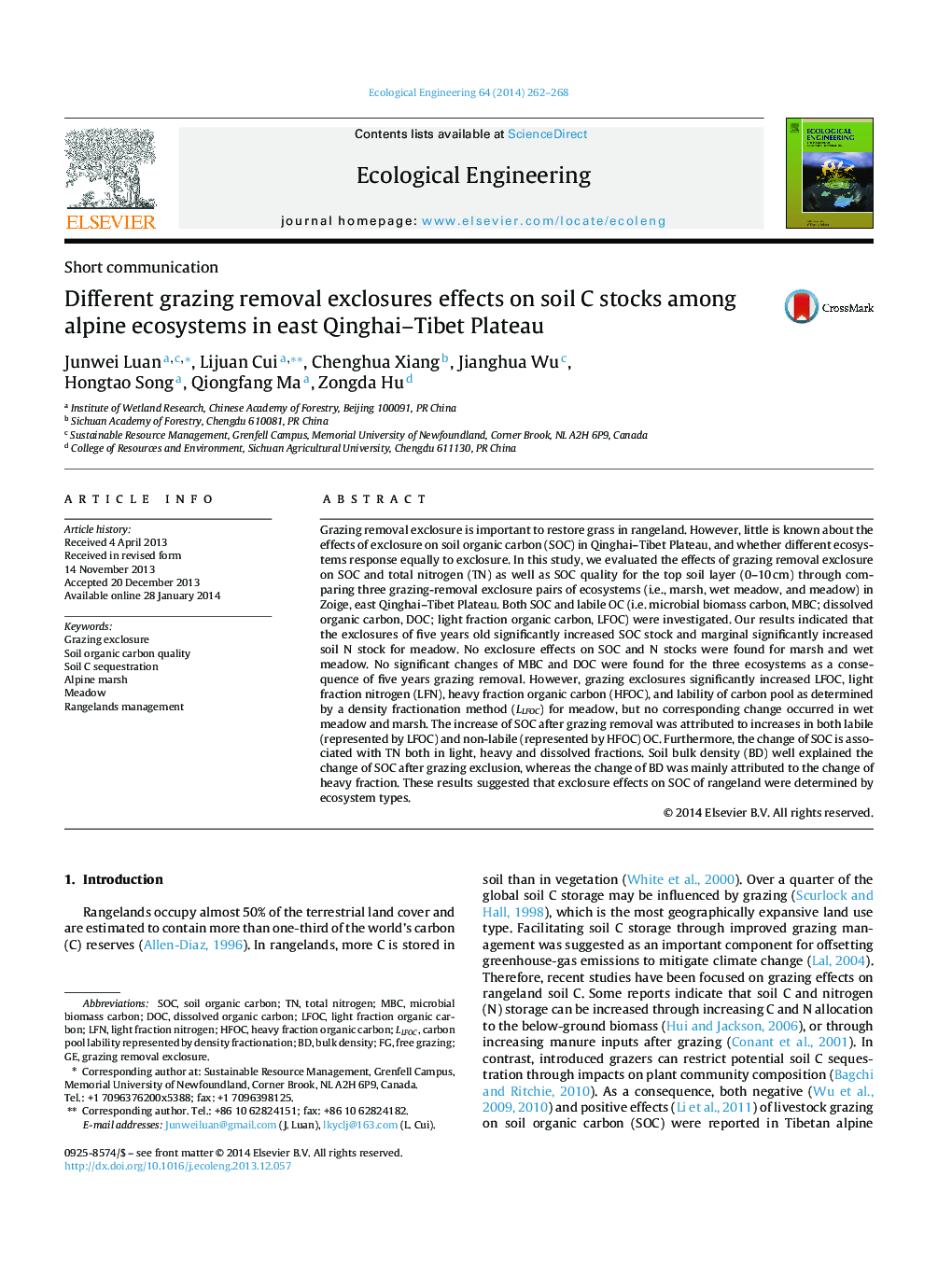| Article ID | Journal | Published Year | Pages | File Type |
|---|---|---|---|---|
| 4389587 | Ecological Engineering | 2014 | 7 Pages |
•5-year-old exclosure increased soil C and N stocks for meadow.•Soil C increase was attributed to increases in both labile and non-labile OC.•No exclosure effects on soil C and N stocks were found for marsh and wet meadow.•Changes in soil bulk density, N, dissolved C explain soil C change after exclosure.
Grazing removal exclosure is important to restore grass in rangeland. However, little is known about the effects of exclosure on soil organic carbon (SOC) in Qinghai–Tibet Plateau, and whether different ecosystems response equally to exclosure. In this study, we evaluated the effects of grazing removal exclosure on SOC and total nitrogen (TN) as well as SOC quality for the top soil layer (0–10 cm) through comparing three grazing-removal exclosure pairs of ecosystems (i.e., marsh, wet meadow, and meadow) in Zoige, east Qinghai–Tibet Plateau. Both SOC and labile OC (i.e. microbial biomass carbon, MBC; dissolved organic carbon, DOC; light fraction organic carbon, LFOC) were investigated. Our results indicated that the exclosures of five years old significantly increased SOC stock and marginal significantly increased soil N stock for meadow. No exclosure effects on SOC and N stocks were found for marsh and wet meadow. No significant changes of MBC and DOC were found for the three ecosystems as a consequence of five years grazing removal. However, grazing exclosures significantly increased LFOC, light fraction nitrogen (LFN), heavy fraction organic carbon (HFOC), and lability of carbon pool as determined by a density fractionation method (LLFOC) for meadow, but no corresponding change occurred in wet meadow and marsh. The increase of SOC after grazing removal was attributed to increases in both labile (represented by LFOC) and non-labile (represented by HFOC) OC. Furthermore, the change of SOC is associated with TN both in light, heavy and dissolved fractions. Soil bulk density (BD) well explained the change of SOC after grazing exclusion, whereas the change of BD was mainly attributed to the change of heavy fraction. These results suggested that exclosure effects on SOC of rangeland were determined by ecosystem types.
